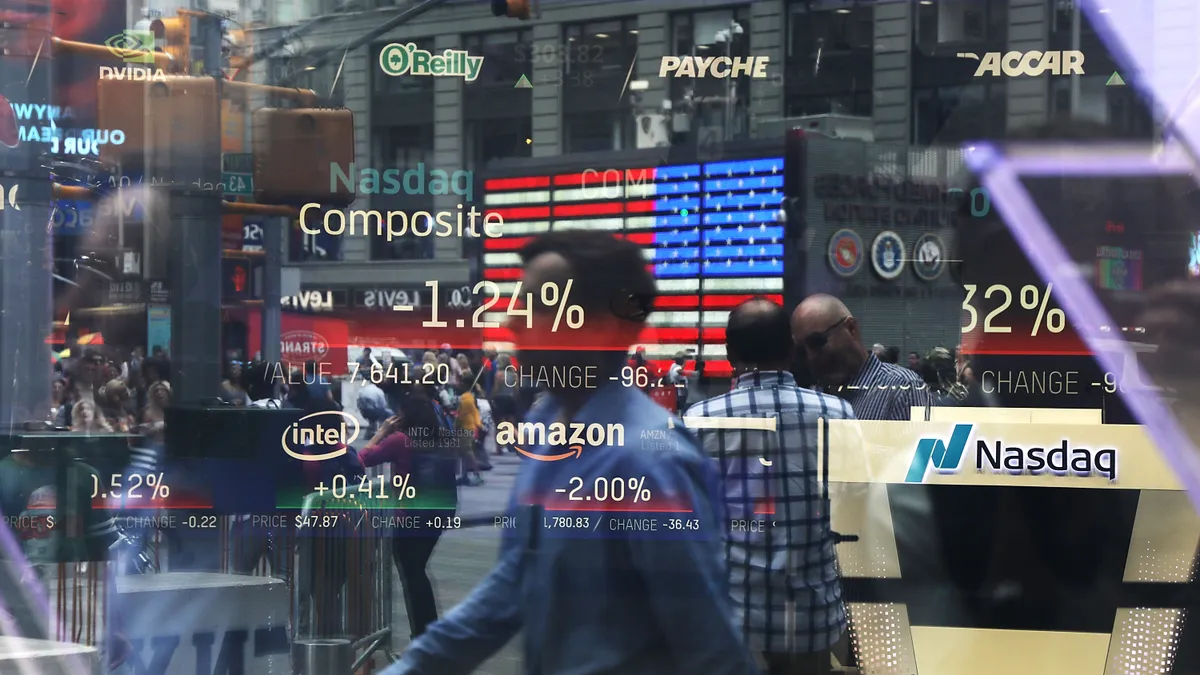Dive Brief:
- Expectations for second-quarter profit margins at U.S. companies sagged as wages and the cost of materials surged, according to a survey by the National Association for Business Economics (NABE). The percentage of survey respondents who expect profits to rise in the next three months fell to 22% in April from 29% in January.
- “Cost pressures are starting to impact profitability,” according to Jan Hogrefe, chief economist at Boeing and chair of the NABE Business Conditions Survey. NABE panelists have not expressed such a dim view of profits since the height of the pandemic in October 2020.
- Inflation was identified as the top risk by the largest share of panelists (37%), with three out of four respondents reporting rising materials costs and seven out of 10 saying they raised wages during the first quarter — the highest share in a data series that goes back 40 years.
Dive Insight:
CFOs concerned about the harm to profits from the biggest surge in price pressures in four decades need to also track the risk that an aggressive inflation-fighting campaign by the Federal Reserve may tip the economy into a recession.
Fed Chair Jerome Powell on Thursday indicated that policymakers will likely push up the federal funds rate by a half point at the end of a two-day meeting on May 4. It would be the first increase in the benchmark rate of that size since 2000.
The central bank has also signaled that it plans to further cut stimulus by beginning to trim its $9 trillion balance sheet.
Powell is trying to slow several measures of inflation, including an 8.5% jump in the consumer price index on a 12-month basis in March and a 11.2% surge in the producer price index, a gauge of suppliers’ costs to businesses.
The Fed raised the benchmark interest rate by a quarter point last month in the first reduction of accommodation since 2018. It confronts the challenge of increasing borrowing costs enough to curb inflation but not so high that it undercuts employment or economic growth.
A downturn “is one of the biggest downside risks that people see,” Michael Chow, CEO of DC Group Inc., said in a NABE webinar. Rising “interest rates might be one of the biggest anticipated drags on growth that may be on people’s minds when they consider a possible recession.”
Thirty-eight percent of respondents to the NABE survey see a better than 50% chance of recession during the next 12 months, while 39% put the odds at between 11% and 25%.
“There’s a little bit of a discombobulated mode to the economy, where we have the threat of what’s happening in Ukraine and Russia, what’s happening in supply chains in China, what’s happening with the Federal Reserve and monetary policy,” Lester Jones, chief economist of the National Beer Wholesalers Association, said during the NABE webinar. “These are all very destabilizing.”
Recession emerged as a top risk in a survey last quarter by Gartner, along with inflation, supply chain disruptions, attracting and retaining post-pandemic talent and ransomware threats.
“What our respondents are saying in this survey is that this is something that ERM [enterprise risk management] shops should consider having on their agenda,” Zachary Ginsburg, research director for Gartner’s ERM research team, said in an interview. “They should be attempting to discover what are the potential implications of a macro-economic downturn.”
The share of respondents to the NABE survey who reported rising profit margins at their companies during the first quarter fell to 26% in April from 35% in January.
Although the proportion of companies that reported having no shortages rose to almost one third from roughly one quarter during the January survey, “supply chain is still a problem that still needs to be worked through,” Jones said.
To be sure, the NABE survey revealed a few bright spots. For example, the share of companies reporting labor shortages declined.
The survey is based on responses from 84 NABE members who work for private sector companies or trade associations.














